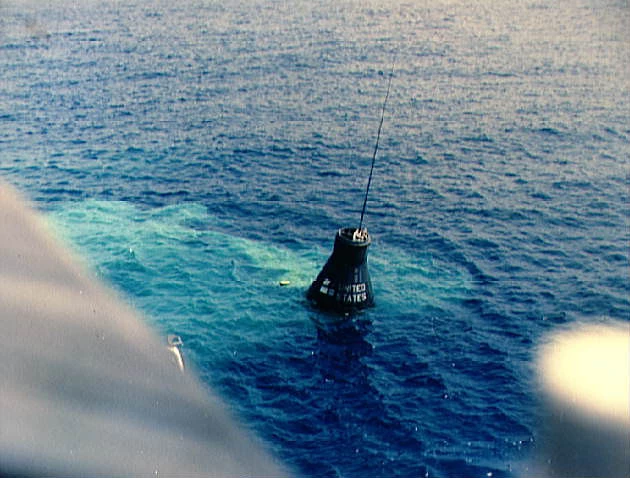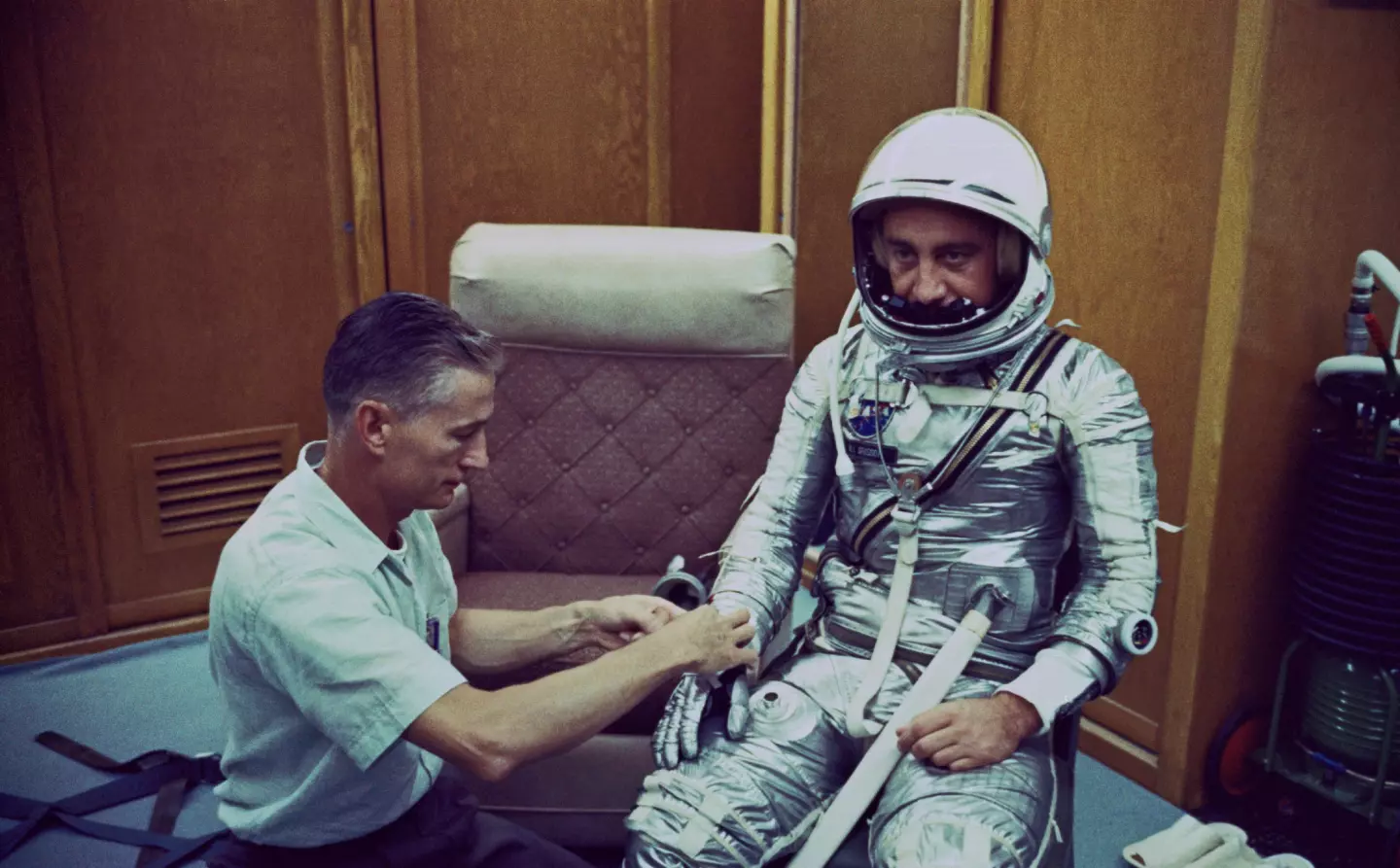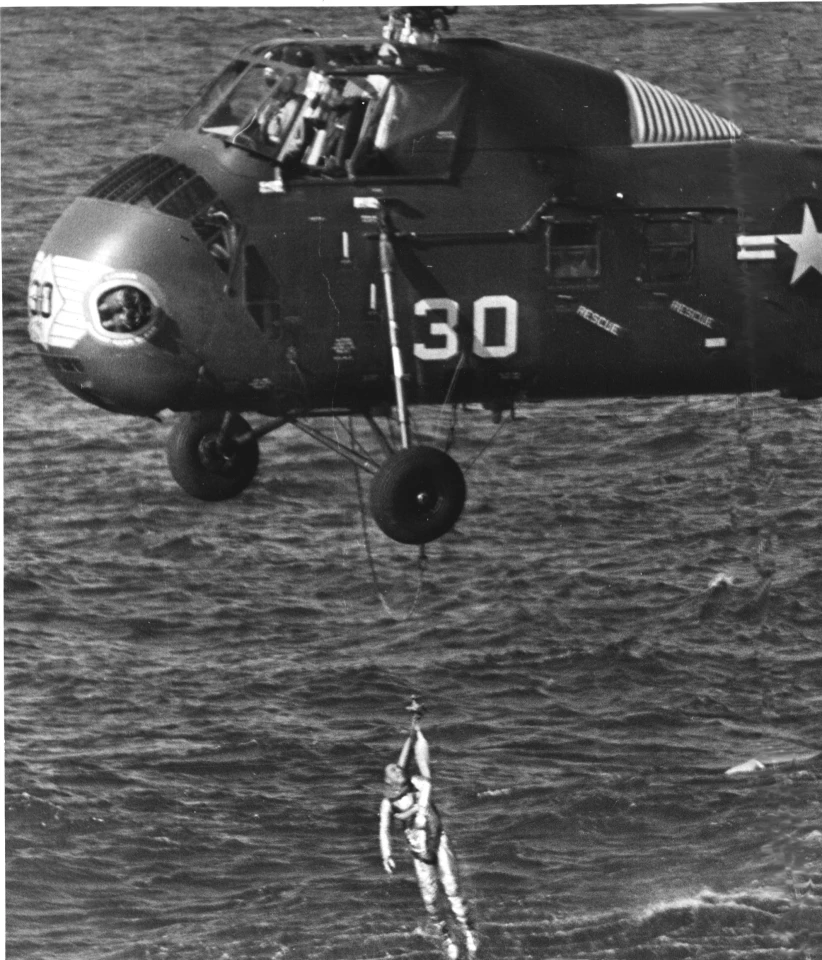Sixty years ago this week, America sent its second man into space. The mission had gone flawlessly, but nearly ended in tragedy when the Liberty Bell 7 Mercury space capsule sank into the sea, almost taking astronaut Virgil Grissom with it.
On July 21, 1961 at 8:45 am EDT, NASA astronaut Virgil "Gus" Grissom was sitting snug and secure in the confines of his Mercury space capsule, call sign Liberty Bell 7, at the end of the Mercury Redstone 4 (MR4) mission. He was America's second person to fly into space and just the third in the world at that point.
The 15-minute-and-37-second suborbital flight from Cape Canaveral Air Force Station Launch Complex 5 in Florida had gone off without incident and now Grissom was jotting down instrument panel readings as he waited for the US Navy helicopter hovering overhead to secure the capsule for recovery and transfer to the aircraft carrier USS Randolph.

Suddenly, there was a loud bang and the entry hatch blasted away from the capsule. The sea flooded over the sill and into the compartment as Grissom scrambled out of his seat and through the opening. In seconds, he was treading water in his spacesuit as the capsule began a plunge of 3,000 fathoms (18,000 ft, 5,500 m) to the bottom of the Atlantic Ocean north of the Bahamas – a fate that he almost shared.
The mission
Less than 20 minutes earlier, Grissom was lying on his back in his bespoke padded seat inside Liberty Bell 7, which was still on the pad at Cape Canaveral atop the Redstone booster rocket. He'd been selected in January 1961 as the primary pilot for Mercury Redstone 4, with John Glenn as his backup.
The US was still smarting at being beaten to put the first man in orbit by the Soviets with the flight of Vostok 1. But NASA was committed to developing the technology and experience needed for true spacefaring rather than stacking up a string of stunt-like firsts like their Russian counterparts, so the plan remained to continue flight testing the Mercury capsule before committing to an orbital mission.
For Mercury Redstone 4, the plan was to repeat the flight of Mercury Redstone 3 and test the heavily modified Mercury spacecraft that had integrated the design demands of the Mercury Seven astronauts. These changes, plus the time required to prep the rocket, were some of the many reasons the timetable couldn't be pushed up. Worse, the liftoff date originally planned for July 16 kept being pushed back due to bad weather at the Cape.

However, there were some changes to the flight plan. The most important of these was to drastically reduce Grissom's workload so he could spend more time looking out the window and generally enjoy the experience of flying weightless through space. So, for example, where Alan Shepard spent 12 minutes in manual control of Mercury Redstone 3 to carry out maneuvers, Grissom would only do so for one.The new Mercury
Built by McDonnell Aircraft, the Mercury capsule for MR4, number 11 in the production series, was a very different craft from the one that took Alan Shepard into space a few weeks before, and included last minute modifications like the rearranged instrument panel that Shepard found hard to scan on his flight.
The most obvious difference was that instead of two small portholes, Liberty Bell 7 had a large, trapezoidal centerline window. Made by Corning Glass Works in Corning, New York, it was made out of multiple layers of glass bonded together with one layer made of a thick sheet of Vycor high-silica, high-temperature glass and the others of tempered glass. The window could withstand temperatures of up to 1,800 °F (980 °C) and was as strong as the spacecraft's pressure vessel itself.

The manual controls for the capsule had also been improved, with small movements of the joystick allowing finer, more responsive and more stable responses. With rate damping and redundant firing systems for the pitch, yaw, and roll thrusters, it was like an old car being given power steering.
In addition, the posigrade rockets that thrust the capsule away from the booster were modified so that they fired inside the adapter trunk. This gave 78 percent more thrust thanks to the trapped gases producing a pop-gun effect.
But the most significant modification was to the hatch. The original Mercury hatch was designed to bolt on with 70 titanium bolts, which made removing it a long and tedious prospect. Instead, if the pilot had to get out in a hurry after splashdown, he was expected to remove a small bulkhead in the nose of the capsule and crawl out through the antenna trunk.

The astronauts didn't like this arrangement at all. It made them essentially passive passengers until the capsule was fished out of the sea and flown to the recovery carrier. Also, the antenna trunk exit only worked if the astronaut was fit and conscious. If they were injured or unconscious, it was almost impossible to get them out while in the water.
Instead, the astronauts insisted on a hatch that they could open by themselves from the inside, like those found on an airplane. The first version, which flew on Mercury Redstone 3, used a latch, but this was slow and weighed 69 lb (31 kg), which was too heavy for orbital flights. The new, lighter hatch had holes drilled in the bolts, which were filled with explosives and a detonator. By pressing a pin and pulling a plunger, the pilot could blow all the bolts at once and eject the hatch.
What could go wrong?
Liftoff of MR4
In contrast to Mercury Redstone 3, the morning's preflight preparations for MR4 were better timed and less hurried. Grissom was calm as he climbed into Liberty Bell 7 again and waited through a 30-minute hold in the countdown while a hatch bolt was repaired and the other 69 were inspected by McDonnell technicians. This was followed by another hour of holds for minor technical difficulties.

Finally, at 8:30 am EDT, the count reached zero and the engine on the Redstone ignited. It fired for two minutes and 20 seconds before shutting down. Two seconds later, the escape tower was jettisoned and the posigrade rockets then separated Liberty Bell 7 from the booster at a speed of 15 ft/s (4.6 m/s).
Inside the capsule, Grissom was a bit scared by the liftoff, but soon calmed down as the acceleration mounted to 3 g and the vibrations increased. Looking out the window, he could see the escape tower as it rocketed free and then drifted away behind him, falling back to Earth to splash down in the Atlantic.
Going ballistic
Now Liberty Bell 7 was ballistic. The spacecraft automatically turned itself 180 degrees to face backwards, with the heat shield facing forward. A mere five minutes into the flight, the capsule reached a maximum altitude of 115 miles (185 km) and was 150 miles (240 km) downrange from Cape Canaveral. Fifteen seconds later, the retro rocket pack fired, slowing the capsule for reentry.

Inside, Grissom had trouble concentrating on his instruments because of the spectacular view out of the new window. Below him rolled the Florida coast, including Cape Canaveral, Merritt Island, the Banana River, the Indian River, what looked like an airport runway, and West Palm Beach.
At the seven-minute-and-15-second mark, the capsule began reentry and slowed as it encountered the atmosphere. Despite being engulfed in flame as the heat shield glared white-hot, Grissom continued to call out instrument readings, though he had no way of knowing if his transmissions were getting through the plasma cloud around him.
Three minutes later, Liberty Bell 7 had slowed enough to deploy its drogue chute followed by the main shute, then the heat shield jettisoned and a trunk-like landing bag fell open under the capsule to act as a shock absorber for when it hit the water. Looking up warily at a six-inch (15-cm) tear in his parachute, Grissom dumped his peroxide fuel and transmitted his instrument readings.
Splashdown and hatch blown
Fifteen minutes and 37 seconds after launch, Liberty Bell 7 splashed down 300 miles (480 km) from Cape Canaveral. An automatic radio beacon switched on and green dye squirted into the sea from the capsule to act as a visual marker for the two recovery helicopters.

In preparation for recovery, Grissom removed the oxygen hose from his spacesuit, opened his helmet visor, and detached the helmet from the suit's metal collar as the capsule righted itself after splashdown and stabilized. As the recovery helicopters arrived, Grissom told Lieutenant James L. Lewis, the pilot of the primary recovery helicopter, to wait five minutes while he recorded the final readings on his instrument panel.
Finishing his instrument notes, Grissom relaxed as he waited for recovery when he heard a bang. The hatch vanished and water flooded inside as the explosive bolts detonated, hurling away the hatch. Luckily, Grissom had unbuckled his harness, so he could scramble out of the hatch. If he hadn't he could have been America's first space fatality.
The capsule became heavier by the second. Buoyed up by the air in his suit, Grissom swam back to see if he could help to save his spacecraft, but the water flooding in soon had it weighing over 5,000 lb (2,300 kg) – so heavy that the tether had to be released to keep the helicopter from crashing, and Liberty Bell was left to sink to the sea bottom.

Now alone in the water, Grissom looked around for divers to assist him and was confused when he saw none. Worse, he found that his suit was losing air, and he had trouble staying afloat. Working quickly, the helicopter crew dropped a personnel hoist. Grissom hurriedly threw the horse collar sling over his shoulders, though backwards, and he was winched upward. To add insult to indignity, the swelling sea dunked Grissom twice before he became fully airborne.
He had only been in the water for about five minutes.The wash up
Liberty Bell 7 remained on the bottom of the Atlantic until it was recovered in 1999 by Oceaneering International Inc, but even examination decades after the event failed to definitively answer why the capsule's hatch blew when it did. The immediate theory was that Grissom had accidentally struck the plunger, setting it off. However, it might also have been due to the outside lanyard getting tangled by the landing bag's straps, a faulty ring seal, or static electricity from the helicopters.
One bit of evidence in Grissom's favor is that his hand was uninjured after the flight, while all the other Mercury astronauts who blew their hatches suffered slight bruising. This was dramatically demonstrated by Wally Schirra after the Mercury Atlas 8 mission in 1962. As his Sigma 7 capsule sat on the deck of the recovery carrier, Schirra deliberately blew the hatch to prove that the detonation caused visible hand injuries, vindicating Grissom.

With Grissom safe, the United States now had two crewed missions under its belt and was ready for the first orbital flight later in the year. Unfortunately, they suffered another international embarrassment two weeks later when the Soviet Union sent Vostok 2 into orbit piloted by Gherman Titov.
The upcoming Mercury Atlas 6 mission with John Glenn was scheduled to make up to three orbits in under five hours before returning to Earth. Titov stayed in space for over 25 hours and made 17 orbits, seven months before Glenn made it to the launch pad.
The Americans still had a lot of catching up to do in the race to the Moon.












